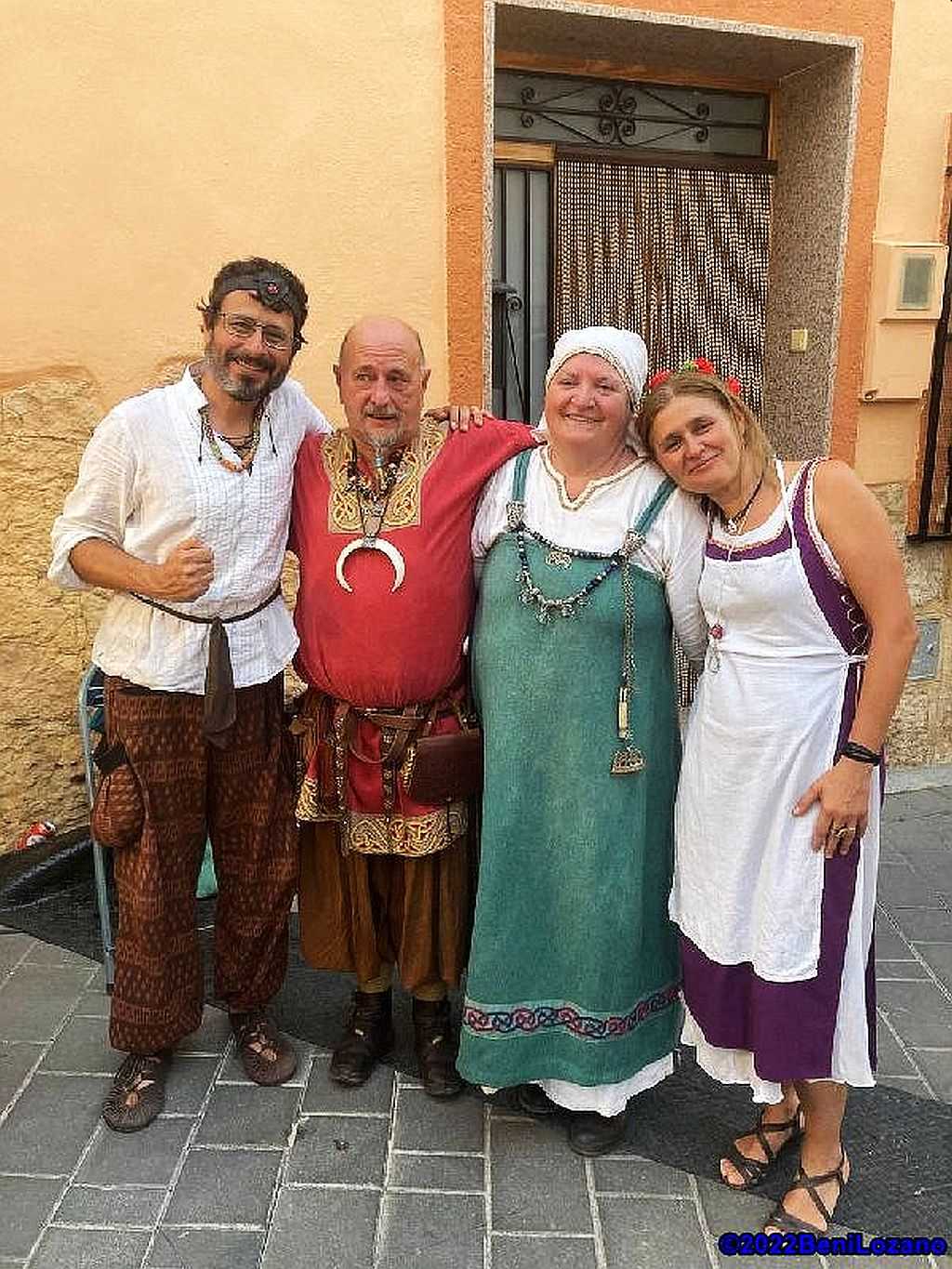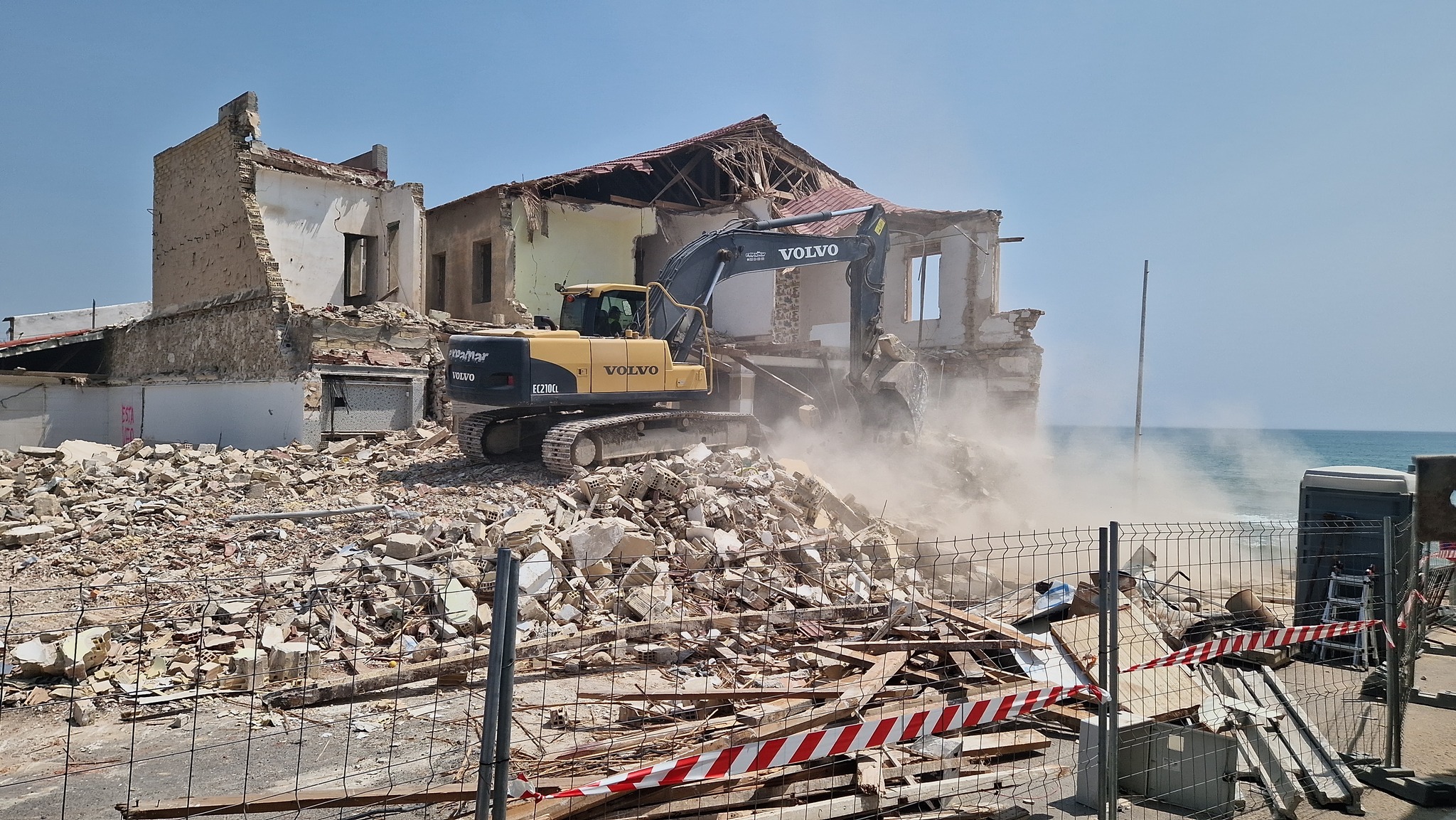
Latest Spanish News In English

Orihuela Launches Nighttime Museum Activities for Summer
PUBLISHED: 2025-06-30 16:44:26The Orihuela Department of Culture, together with Orihuela Cultural, has unveiled a special program of evening activities at the city’s museums during the months of July and August. The initiative aims to bring residents and visitors closer to Orihuela’s historical and artistic heritage in a relaxed nighttime atmosphere. Councillor for Culture Anabel García explained that the program was designed as a cultural and leisure alternative for those who remain in the city over the summer.
Under the slogan “When the heat fades and the magic begins,” the activities will take place on Friday and Saturday nights throughout the summer. The program includes guided tours, creative workshops, escape rooms, open house evenings, and more. According to García, this marks the first time Orihuela will offer a dedicated cultural program for July and August, transforming the city into a vibrant cultural hub after sunset. Locations such as the College of Santo Domingo, the Reconquista Museum, and the Miguel Hernández House Museum are included in the itinerary.
All events are scheduled at night to take advantage of the cooler temperatures. Reservations are required and can be made by calling 672 219 071 or emailing reservas@orihuelacultural.es. The general summer opening hours for municipal museums will be Monday to Saturday from 9:00 AM to 2:00 PM, and Friday evenings from 9:30 PM to midnight. The Sacred Art Museum and the Cathedral will also open on Saturday nights from 9:00 PM to 11:30 PM

La Nucía’s Medieval Market turns 20 years of age
PUBLISHED: 2025-06-30 16:39:47Every year in July a medieval market is set up in the village centre of La Nucía to commemorate that on the 9th of July 1705 the town charter was signed. This market has been held since 2005 and this year includes a medieval camp, fencing, bally dancing, medieval characters, troubadours, fire shows, workshops for children and craft demonstrations.
More than forty authentic artisans have reserved a space to sell what they have made with their own hands. The Plaza Mayor and the streets surrounding the Town Hall will be filled with stalls with a wide variety of authentic crafts: ceramics and pottery, glass, designer and costume jewelry, carved wood and marquetry, handmade soaps and perfumes, wooden toys, lamps made with pine cones or pumpkins, and much more.
The blacksmith will be working at his forge and will offer you the chance to make a knife, while the potter will let you make your own bowl on his wheel. There will be other workshops at the medieval encampment, which will be set up again in San José Square, where there is ample space for archery and fencing, as well as medieval combat demonstrations.
In the gastronomic corner you will find food stalls: cheeses and sausages, nuts, jams and sweets, as well as a medieval tavern, a pulpería serving plates of octopus, and a jaima with Arab food. And while parents recover their strength there, children can participate in craft workshops, play board games or have a ride on the the mythological carousel.
To complete the medieval atmosphere, troubadours, knights, a belly dancer, buffoons, beggars and other medieval characters will tour the streets and corners of the market and close the market every night with a great fire show.
The Market is set up in the oldest part of the village, around the Town Hall, and opens to the public on Friday the 11th, Saturday the 12th and Sunday the 13th of July from 6 pm to midnight (or later…). There is ample parking (free) in the Auditorio de les Nits car park, 100 meters from the market and in a large open-air car park, just behind the old town. The complete market programme can be found at https://www.puebloartesano.es/lanucia

Luxury Goods, Guns, and Drugs Seized in €2.5 million Murcia Raid
PUBLISHED: 2025-06-30 16:36:20On June 30, 2025, the Spanish Civil Guard and Tax Agency, in coordination with French Customs in Montpellier, announced the dismantling of a criminal group based in Murcia involved in the international trafficking of marijuana under Operation ‘Thor-Cerriche’.
The group operated a well-organized logistics system: marijuana was hidden at a farm in Librilla (Murcia) until ready for shipment. They then used industrial warehouses to load the drug into hidden compartments of international transport trucks, later completing loads with legal goods to avoid detection.
Thanks to cooperation with French authorities, one of these shipments was intercepted in France with over 200 kg of marijuana concealed in a truck. Two suspects were arrested on-site.
The investigation culminated in the arrest of four more members in Murcia, including the ringleader. Raids were carried out in Murcia, Librilla, and Molina de Segura, with 226 kg of marijuana seized, along with various assets including:
Over €120,000 in various currencies
Firearms and weapons (including a loaded pistol and hunting machete)
A bulletproof vest, handcuffs, and night vision gear
Luxury items (watches, electronics, silver coins)
Vehicles (cars and a freight truck)
20 properties immobilized
The gang’s experience, financial power, and international reach made the investigation complex and required extensive surveillance and collaboration across borders. The operation has dealt a significant blow to this high-level drug trafficking network.

The Last Hope for Babilonia Beach Residents as Demolitions Prompt Legal Battle Over Alleged Coastal Authority Misconduct
PUBLISHED: 2025-06-30 16:14:10A group of residents and business owners from Babilonia Beach in Guardamar del Segura are fighting what may be their final legal battle to prevent the demolition of their homes and properties. Following the recent destruction of two long-standing restaurants, Jaime Playa and Miramar, a new complaint has been filed accusing two senior officials from the Coastal Department in Alicante of malfeasance, offering a potential lifeline for the over 60 homes still facing demolition.
The complaint targets Rosa de los Ríos, current head of the Alicante Coastal Authority, and her predecessor, Ángel Muñoz Cubillo. Filed by the owner of one of the demolished restaurants, the complaint alleges the two knowingly issued an unfair resolution by initiating a recovery of possession despite existing legal protections.
The plaintiffs argue that under the 1989 Coastal Regulations, permanent authorizations were converted into 30-year concessions starting from the 1988 Coastal Law, with automatic extensions for another 30 years in 2018, ensuring their validity until 2048.
This interpretation forms the basis of the legal argument: that the concessions, including for properties like el Restaurante Jaime, were still valid and should have prevented the demolitions. Furthermore, the lawsuit contends that both officials were aware that initiating recovery actions against properties registered in the Property Registry was unlawful.
According to attorney Joaquín Galant, the Coastal Authority acted prematurely and illegitimately, pushing forward demolitions without waiting for judicial confirmation of concession validity. The case specifically points to the denial of a license to María Teresa Ríos for el Restaurante Jaime, despite knowledge that the property sat on land with a valid, automatically extended concession.
The demolished properties were located on public coastal land, near the start of Avda Ingeniero Codorniu. These actions are part of a broader government plan led by the Ministry for Ecological Transition (Miteco) to remove unauthorized buildings along the beach, arguing they lack public ownership rights. Over 60 more demolitions are scheduled for September, affecting approximately 600 metres of beachfront properties.
Residents argue that their homes were originally built with government support as a defense against beach erosion and were granted legal concessions accordingly. They maintain that the demolitions violate the extensions granted under existing law and that the authorities acted with full knowledge that their actions might be illegal.
The case now rests with the Alicante Court of Appeals, which must decide whether to reopen the malfeasance case. If the court rules in favour of the residents, it could halt further demolitions and trigger a broader investigation into potential misconduct by the Coastal Authority.
“For the residents of Babilonia Beach, this legal appeal may be their last chance to halt the demolitions and preserve the homes and community they’ve built over many generations.”

Training Europe’s Next Generation of Pilots in the Heart of Alicante
PUBLISHED: 2025-06-30 16:50:01Located at the Mutxamel aerodrome in Alicante, European Flyers has established itself as one of Europe’s foremost pilot training academies. With additional facilities in Madrid, Toledo, and a new base in Seville following its merger with Aerotec, the academy trains future professionals in various aeronautical disciplines, including airplane, helicopter, and drone piloting.
Founded over 30 years ago by the Miñano family, the academy has grown significantly in reputation and capacity. Today, it serves more than 140 students and operates a fleet of over 45 aircraft, including both single- and twin-engine planes as well as helicopters. Flight simulators complement practical training, providing immersive learning experiences for handling emergency scenarios and honing cockpit skills.
The demand for skilled pilots is growing rapidly. According to estimates, around 600,000 new pilots will be required globally by 2042. In Spain alone, the annual need is about 1,200 pilots, but the country currently trains only 700 to 800 each year. As a result, students from European Flyers are often in high demand before they even complete their training. School director and founder Luis Miñano, himself a seasoned pilot, notes that airline companies frequently reach out in advance to secure upcoming graduates.
The academy’s comprehensive program spans approximately two years, consisting of 1,000 hours of theoretical instruction, 180 hours of flight training, and around 80 hours using simulators. The training not only prepares students for licensing exams but also offers them the option to pursue degree-level qualifications. The Alicante campus is one of the official venues for these examinations.
The school’s environment closely mirrors a professional aviation setting. Hangars styled in the spirit of “Top Gun” house flight simulators, training aircraft, and maintenance bays. Students wear uniforms and gradually earn shoulder ranks slides as they progress—from two stripes indicating a commercial pilot to four stripes reserved for Captain’s. A digital board lists scheduled flights with aircraft types and destinations, just like in a real airport.
Inside the hangars, trainees use dual-control planes equipped with identical flight displays—similar to cars used in driving schools—to ensure safe learning under instructor supervision. Outside, a variety of aircraft are prepped for daily sorties. Miñano explains that the school completes an average of 70 flight hours per day, totalling over 25,000 annually, thanks to a modern fleet designed for efficiency, low emissions, and high performance.
A special touch of heritage is found in a historic helicopter on display in the hangar, once flown by Miñano’s father. It’s a symbolic reminder of the school’s roots and legacy.
Certified as an Approved Training Organization (ATO) by AESA and holding ISO 9001 and ISO 14001 certifications for quality and environmental management, European Flyers stands as a benchmark in aviation education—combining cutting-edge technology, experienced leadership, and a deep respect for tradition.

Major New Legal Protections for UK Veterans Under Armed Forces Covenant
PUBLISHED: 2025-06-30 16:25:50Veterans’ rights embedded in law: Ensures fair access to services and priority support for those injured or bereaved.
“Homes for heroes” guarantee: Veterans are now exempt from local connection rules for social housing.
£3.5 million funding: For veterans at risk of homelessness, including mental health, employment, and independent living support.
Annual reporting requirement: Government must publish yearly updates on Covenant delivery and progress.
Cross-government accountability: Every UK department—covering areas like pensions, welfare, employment, and criminal justice—must now uphold the Covenant in policymaking.
Support for veterans’ families: Future policies may include travel benefits for bereaved families and flexible working for spouses.

Rojales Invests Over €500,000 in Eco-Friendly Trucks for Biowaste Collection
PUBLISHED: 2025-06-30 16:32:15The Rojales City Council has launched a public tender for the acquisition of two new garbage trucks dedicated to the selective collection of biowaste. With a total investment of €507,500.62 (VAT included), the project is fully financed by the European Union through the Next Generation EU funds, under Spain’s Recovery, Transformation, and Resilience Plan.
The procurement is divided into two lots: one for a 22-cubic-meter rear-loading truck, with a budget of €322,491.62, and the other for a more compact 7-cubic-meter vehicle, costing €185,009. Both vehicles will be powered by Compressed Natural Gas (CNG), aligning with the municipality’s efforts to modernize waste collection and reduce its carbon footprint.
The new trucks will be equipped with cutting-edge technology, including integrated weighing systems, GPS geolocation, and advanced route management software. These features aim to optimize operational efficiency and enhance the accuracy of organic waste collection. The trucks will also feature the official branding of the Rojales City Council and the European Union, reflecting the institutional support and funding behind the initiative.
In addition to the supply of the vehicles, the contract includes initial maintenance services, training for municipal waste management staff, and a minimum three-year warranty. This warranty may be extended depending on the proposals submitted during the bidding process.
According to the tender terms, delivery and implementation of the new trucks must occur within a maximum of eight months following the formal signing of the contract. However, proposals offering a shorter delivery timeline will be given favorable consideration during the award process.
All vehicles must comply with current national and European safety, emissions, and certification standards. They are to be delivered fully operational, registered, and labeled in accordance with the PRTR (Plan for Recovery, Transformation, and Resilience) guidelines.
This investment is a key part of Rojales’ broader strategy to advance sustainability, promote the circular economy, and meet the growing environmental standards set by both national and European legislation. The biowaste collection project falls under Line A of the state aid program, which supports the development of new selective waste streams, with a particular focus on organic waste.

Champions Crowned at Orihuela Beach Volleyball Showdown
PUBLISHED: 2025-06-30 16:22:35The finest beach volleyball in Spain lit up Cala Bosque �' La Zenia in a true celebration of the sport. The inaugural edition of the ‘Revolution 1920 Playas de Orihuela’ tournament — a prestigious 3-star event on the Spanish National Beach Volleyball Circuit organized by the Royal Spanish Volleyball Federation — concluded on Sunday with an unforgettable showcase. Packed stands and a phenomenal atmosphere marked both the semifinals and the thrilling finals.
In the women’s category, the duo Florian/Serrano claimed the championship with a commanding victory over Hopf/Palma, winning 0-2 (17-21, 9-21). The bronze went to Khilko/Moreno, who showed remarkable consistency throughout the tournament.
In the men’s final, Saucedo/Viera delivered a solid performance to defeat Moreno/Sanfélix in straight sets, 2-0 (21-12, 23-21), in a gripping match. Levinson/Karvatskyi took third place after an impressive run through the Orihuela sands.
The event was graced by the presence of Orihuela’s Mayor, Pepe Vegara; Sports Councillor, Víctor Sigüenza; and Coastal and Beaches Councillor, Manuel Mestre. They were joined by Juan Lario, representative of the Royal Spanish Volleyball Federation, for the final day’s festivities.
But Revolution 1920 went far beyond the sport itself. With a stunning beachside setting, live music, gourmet food, entertainment, and a dedicated business networking area, the tournament offered a holistic experience blending leisure, tourism, and top-level competition. The event’s technical execution was led by Deporte y Empresa, with eye-catching temporary architecture and logistical setup by Babalú Producciones.
Thanks to its enthusiastic crowds and high-calibre play over four thrilling days, Revolution 1920 has firmly established itself as a standout event on the summer calendar.

Local Author’s Cozy Mystery Series Celebrates Spanish Village Life—and a Touch of Crime
PUBLISHED: 2025-06-30 16:29:27Murcia, Spain — Set against the shimmering backdrop of the Mar Menor, a new cozy crime series by local author Amanda Judson is giving readers a taste of life on Spain’s southeastern coast—with a gripping twist.
The debut novel, Death in the Salt Flats, follows Angela Markham, a British expat who has traded her past life as a police analyst for a quieter existence by the sea. But when a man is found dead in the salt flats outside her adopted village, Angela finds herself drawn back into an investigation—one that hits close to home.
“I live here, I shop here, I walk these beaches every day,” Judson says. “I wanted to capture the beauty and rhythm of life in this part of Spain—not the postcard version, but the real, lived-in warmth of it. And of course, that doesn’t mean it’s free of secrets.”
With strong local flavour, Death in the Salt Flats blends gentle suspense with colourful characters, including neighbours, shopkeepers, and a fiercely loyal cat. The story explores tensions between heritage and progress, community and isolation, all set in a place many readers will recognise—and others will wish they could visit.
This is the first book in Judson’s Mar Menor Mysteries, a series that brings small-town charm and seaside atmosphere together with clever plotting and heartfelt connections. The second book, Death on the Fairway, is due out later this summer.
Death in the Salt Flats is available now in paperback and Kindle from Amazon.

New provisional June record of 46C set in Spain as Portugal gets red alert and France and Italy fry in 40C
PUBLISHED: 2025-06-29 11:35:26SPAIN has set a new June heat record this weekend, with thermometers soaring to 46C in El Granado, Huelva �' just next to the Portuguese border �' yesterday afternoon.
The milestone is only provisional at this moment and it is still awaiting official confirmation from Spain’s weather agency AEMET.
It comes as a brutal heatwave tightens its grip across a huge swathe of Europe, leaving Portugal under a red alert, while France and Italy swelter in temperatures topping 40C.
The Portuguese Meteorological Institute has sounded the alarm, urging residents and visitors �' including the thousands of expats and tourists on the Algarve �' to stay indoors as the mercury climbs.
READ MORE: Get ready for a Spanish scorcher: Temperatures could ‘exceed 45C’ as Spain becomes ‘branch of the Sahara desert’
Yesterday, Lisbon baked at 42C, while inland regions like Badajoz, just across the Spanish border, hit a sweltering 44C, according to local reports.
Spain’s southern interior is also feeling the brunt, with unofficial readings suggesting a new June high above the previous record of 39.7C.
READ MORE: Court suspends Ryanair’s hefty €107m fine for abusive practices in Spain
The Costa del Sol saw temperatures nudge 38C yesterday, raising concerns about wildfires and strained air conditioning systems.
Experts expect that official data, due later this week, could confirm this as the hottest June on record.
France and Italy are also reeling, with Paris hitting 41C yesterday and Rome sweltering at 40C today, according to national weather services.
READ MORE: Flights cancelled across Spain as EasyJet cabin crew begin three days of strike action
The Mediterranean’s unusually warm ocean temperatures, which are currently around 5C hotter than the average for the time of year, have only worsened the heat, even posing risks to France’s nuclear reactors, which struggle to cool down in such conditions.
Click here to read more Weather News from The Olive Press.










































